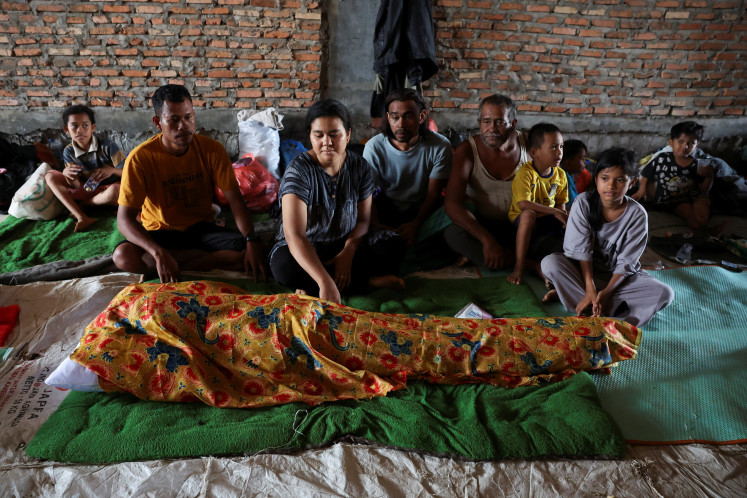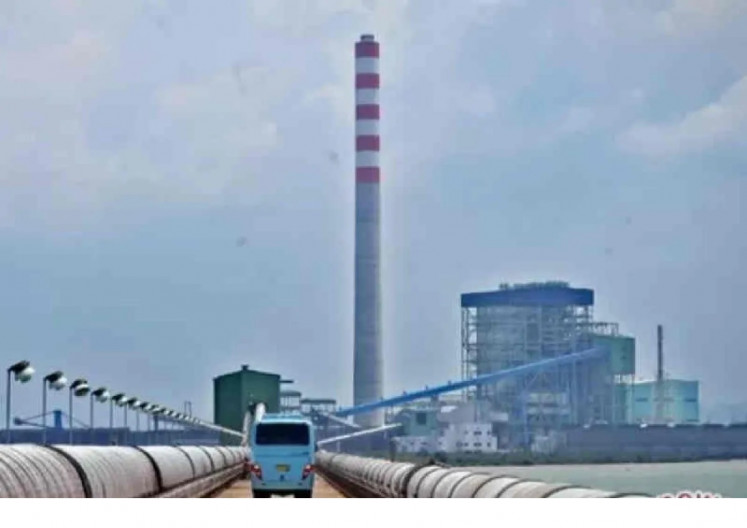Popular Reads
Top Results
Can't find what you're looking for?
View all search resultsPopular Reads
Top Results
Can't find what you're looking for?
View all search resultsCity to seize BTS antennae from illegally built towers
The city will take down and seize antennae from illegally erected base transceiver station (BTS) towers as it seeks to cut back on tower numbers
Change text size
Gift Premium Articles
to Anyone
The city will take down and seize antennae from illegally erected base transceiver station (BTS) towers as it seeks to cut back on tower numbers.
Hari Sasongko, head of the property control and building monitoring (P2B) agency, said Thursday this was far cheaper more reasonable than dismantling the towers.
“It costs about Rp 5 million to Rp 7.5 million to dismantle a tower. That’s very expensive. So we chose to disable the towers by seizing the antennae,” he said.
“We have allocated funds of Rp 1 billion to for this operation.”
Since 2007, the P2B has dismantled 85 illegally built towers.
Officials and critics say Jakarta has become a city of towers, with many towers built each year without the necessary permits, the agency reported.
Of 3,124 towers in the capital, 1,028 do not have building permits, according to P2B data.
Hari admitted lack of monitoring was the main reason for the mushrooming of BTS towers.
“It’s hard for us to control tower developments, due to human resource constraints,” he said.
“We used to have only one team to arrange building permits and control the towers. Now we have two different teams handling the two responsibilities. There will be building inspectors to check the towers. We will no longer tolerate tower owners who breach regulations.”
He added his office was in discussions with the city’s spatial planning agency to determine which areas were appropriate for setting up BTS towers.
Spatial planning agency head Wiriyatmoko said he hoped cell phone operators would share towers to cut back on tower numbers.
“Three operators or more can share a tower. Ideally, this city needs no more than 700 towers,” he said.
Gunawan Tjahjono, a professor of architecture from the University of Indonesia, previously said shared towers could help ease the “visual” and space pollution problems.
Merza Fachys, chairman of the Indonesian Association of Cellular Telecommunications, said one reason why BTS towers were mushrooming was because they needed high positions.
But he pointed out that a BTS did not necessarily require a tower.
“We can put BTS on the roofs of tall buildings,” he said.
In addition to visual pollution, the sprouting of towers and BTS has also sparked protests from local residents.
In early February, residents of Lagoa in Tanjung Priok, North Jakarta, raised concerns that a BTS tower on Jl. Mengkudu posed health risks through radiation.
Wiriyatmoko said the administration was still developing a fiber optic network aimed at reducing the number of BTS.
He added the network would be more cost effective for BTS owners because the equipment could be attached to existing buildings, street lamps or pedestrian bridges, and would not require tall towers.
The network is also expected to be able to improve Internet connections for high schools.










